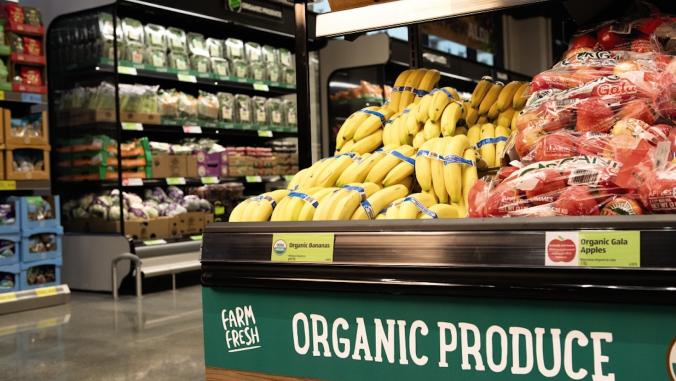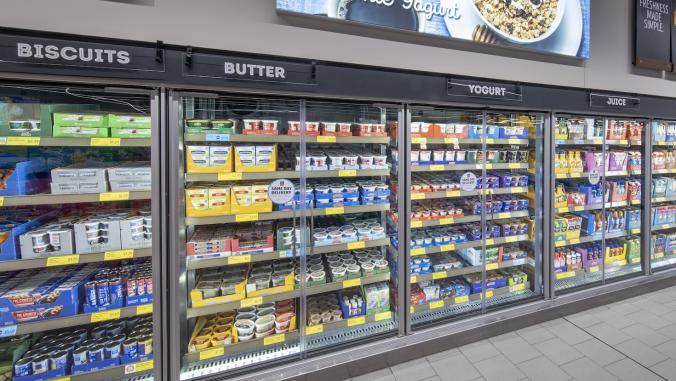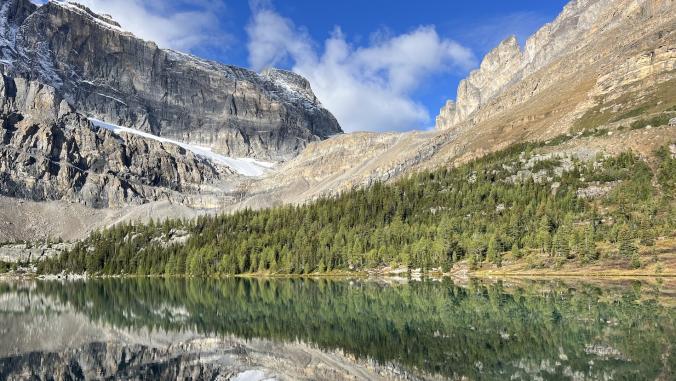Trying to understand carbon offsets is like stepping into quicksand. Ask one question, and you’ll end up with a dozen more. Every new term seems to have an entire world inside of it, filled with complications, nuances and metrics. You quickly can find yourself in over your head.
Honestly, as I labored to truly understand the world of offsets, the experts I spoke to looked and sounded exhausted. Some, even defeated. Many have steeped themselves in a complex, confusing world where they seem to spend most of their time explaining offsets rather than actually avoiding or drawing down greenhouse gas emissions, which is what offsets are intended to do.
But some of these same experts are also invigorated by the new sense of urgency and the changing attitude towards carbon offsets, and by the tantalizing prospects for acceleration brought about by a new administration in Washington, D.C.
Trying to understand carbon offsets is like stepping into quicksand.
"There’s been varying points in the history of carbon credits and carbon markets where they were less accepted, more accepted, less accepted again," Teresa Lang, a senior business development manager of South Pole, a Swiss carbon offsets consultancy, explained to me. "We’re definitely going back into a place where they are a very real part of these net-zero carbon neutrality commitments."
But for carbon credits and the ballooning list of corporate and governmental net-zero initiatives to have their intended impact, buyers will need to understand exactly what they are buying. That’s where the quicksand comes in.
What is a carbon offset?
First, a refresher. Every organization releases greenhouse gases, most commonly carbon dioxide, into the atmosphere due to its operations. These can be direct emissions, such as those from a fossil-fuel power plant, indirect emissions from the electricity purchased to power its operations, or emissions related to an organization’s supply chain, such as travel, shipping or acquiring raw materials or parts.
It’s important to keep in mind that offsets are intended to be a last resort. Remember the "Three R’s" — reduce, reuse, recycle? They’re more than an alliteration. They’re a hierarchy: use the least amount of stuff; reuse what you can; then recycle the rest.
So, too, with carbon and offsets. The first step of any net-zero plan is to increase efficiency — that is, use the least amount of energy and materials to conduct operations — then use as much low-carbon or carbon-free energy as possible. And then offset the remaining energy — whether directly purchased or embedded in other purchases. Going straight to offsets without going through the first two steps is like having a diet soda with your ice cream sundae in order to "offset" some of the calories. Probably not a good diet strategy.
Carbon offsets are a mechanism for companies and others to balance out the carbon they are emitting by investing in projects that either remove carbon from the atmosphere or avoid emitting it in the first place. Many organizations buy carbon credits to fund offset projects and, in the process, keep their carbon balance sheet aligned with the goal of achieving net-zero emissions. Every carbon credit represents one ton of carbon either removed or avoided. The credits are tracked so that a ton can be purchased or sold only once.
Avoid or remove? That is the question
Offset projects can involve a mixture of both carbon removal and avoidance, although one is much harder to accurately measure than the other.
"It’s very difficult to separate the effects of pulling carbon out of the air from not putting pollution back up in the air," explained Danny Cullenward, policy director of CarbonPlan, a nonprofit that analyzes carbon removal opportunities based on the best available science and data.
Removal is easier to calculate but harder to do. The idea is to physically take carbon out of the atmosphere and sequester it, using either a nature-based project such as forestry or agriculture, or an engineered solution such as injecting carbon dioxide deep into rock or soil.
Engineered solutions such as those are still early in their development, so are usually on a much smaller or pilot scale. According to Nick Aster, director of marketing at South Pole, these technologies are still very expensive, hovering between $100 to $300 to remove a ton of carbon. Planting a tree is much more economical at $15 or $20 a ton.
Still, there’s great potential for engineered solutions to make a dent in our climate problem. As the climate crisis becomes more immediate, climate activists are taking a harder look at some of these engineered technologies, which many of them had previously rebuffed.
The carbon avoidance in these offsets are counterfactual math.
Still, because you are physically removing carbon from the atmosphere, it’s much easier to track, calculate and record as a carbon removal solution.
"How does the market value something at a higher cost but where you get more?" Jonathan Goldberg, CEO of Carbon Direct, said during a Carbon Offset Buying session at VERGE 20 in October. "You get CO2 that’s taken out of the atmosphere for a longer period."
The other one, avoided emissions, is where things can get messy. Avoided emissions are when a company pays another entity to not do something that would have resulted in greenhouse gas emissions or pays to change practices to emit less carbon.
The action behind various carbon credit options are manifold. A company can pay to protect a forest at risk of being logged, thereby offsetting the emissions of, say, employee travel. Or pay a farmer to practice regenerative agriculture techniques that sequester carbon dioxide in the soil, offsetting the emissions created by its buildings and grounds. Or pay to have more renewable energy put into the grid, thereby offsetting the fossil-fuel energy it uses.
The challenge with measuring such a carbon credit is that you are comparing the outcome to an event that never happened; it’s all hypothetical. It’s not observable so the measurement is only an estimation. That bothers some experts.
"The carbon avoidance in these offsets are counterfactual math," Goldberg said. "Maybe someone else can figure it out, but I can’t."
Four key terms
As you delve into carbon offsets, you can quickly find yourself inundated with a new vocabulary. There are four key terms to know: additionality; permanence (or durability); buffer pool; and leakage. These are more than just industry lingo. They are how high-quality offsets are differentiated from lower-quality ones.
Additionality. In essence, additionality means that "a project or activity that reduces GHGs would not have happened without the offset buyer or collective buyers in the market," according to the Center for Resource Solutions, a nonprofit that certifies offsets.
For some companies, such as Google, additionality is the main quality it looks for when investing in an offset project: If Google hadn’t invested in an offset project, it wouldn’t have been built.
"We want to make sure that those tons of carbon wouldn’t have been avoided or sequestered hadn’t it been for our investment," Anna Escuer, the lead for water and carbon at Google, said during the VERGE 20 session. "That it was our money that really made that project happen."
Because many projects that avoid emissions produce cost savings, efficiency improvements or quality-of-life benefits, there’s a chance that the company, forest or farm creating them would have done so even without the ability to sell offsets in the carbon credits market. If it would have happened on its own, then there’s no additionality. It becomes a financial transaction that doesn’t add any extra benefit to the planet.
Permanence/durability. For a carbon offset to have real impact on addressing the climate crisis, the credit needs to sequester carbon for a long time. Not in human time, but in geologic time.
Some experts have shifted from thinking about carbon credits in terms of permanence, which can seem overwhelming and impossible, to durability: a credit that will survive decades or centuries, through management changes, incentive changes, human interference and nature’s wrath.
For example, if the owner of a farm sequesters carbon, but decades later, after the farm has been passed on to the farmer’s kids or grandkids, the farm is developed into residential housing, that carbon is no longer sequestered. The credit merely delayed the release into the atmosphere by a few decades.
Calculating and accounting for durability can be tricky — it requires knowing the unknowable.
Similarly, if a project is designed to protect a forest from being logged, it needs to do so for hundreds of years in order to remove a significant amount of carbon. If the land gets taken over in 10 years and then logged, the credit loses its value.
Suffice to say, calculating and accounting for durability can be tricky — it requires knowing the unknowable — and increases the burden on offset buyers to understand what they’re getting for their money.
"A buyer really needs to think carefully about the permanence horizon and articulate how their solutions match the profile of climate change," CarbonPlan's Cullenward said. "Which, unfortunately, is more like geologic time. You have some forms of carbon storage that are essentially resilient to human behavior. Some [others] have physical vulnerabilities and still others, like underground storage, are pretty resilient."
Shopify, which recently announced buying regenerative agricultural carbon removal credits through carbon marketplace Nori, has a plan to check in with farmers when the contracts expire in 10 years.
“As time goes by, and 10-year projects expire, Nori hopes to collect and publicly share information to demonstrate the percentage of fields or projects that have led to any reversal of carbon from soil,” Stacy Kauk, director of Shopify’s sustainability fund, wrote in an email. Still, that backwards look won’t necessarily predict the permanence of offsets in the future.
The fact is, 10 years is simply not enough time to see real improvements. Bringing atmospheric greenhouse gas concentrations to habitable levels could take generations. Shopify hopes that the benefits farmers see from the renewable and regenerative practices will encourage them to continue those habits far beyond the 10-year contract because, as of right now, it doesn’t have a contingency plan to require farmers to do so beyond the time contracts. It’s unclear whether this faith-based approach actually will work.
But experts also worry about contracts set for multiple decades or even a century. They are skeptical that these contracts will be actively enforced. Sometimes, they say, it’s better to have a shorter contract that can be re-upped and validated every decade to ensure carbon sequestration continues as advertised.
Moreover, certain offset projects are more durable than others. Carbon dioxide injected into rock is unlikely to accidentally get released, but a forestry project is always at risk for wildfires, disease, pests and lightning, not to mention illegal or irresponsible logging. All the carbon that had been sequestered literally could go up in smoke and be released back into the atmosphere in a matter of days.
Buffer pool. The issue of permanence leads us to buffer pools, the name given to the extra credits a company purchases as insurance against a possible event, such as a wildfire or flood, that would destroy the carbon offsets the company is buying. Think of it as purchasing more bananas than you need just in case some of them go bad; the extras are your buffer pool.
According to several experts, the way buffer pools are calculated is out of date and hasn’t been calibrated to our quickly shifting reality. "It has to be done in the context of a changing climate," Goldberg said.
For example, climate change is creating more and stronger wildfires, destroying more credit-protected forestry carbon sinks. Even with buffer pools, some companies may not be buying enough offsets to account for the increased losses as climate change gets worse and more impactful.
Leakage. Leakage refers to an unintended increase in greenhouse gas emissions or the shifting of emissions from one place to another due to a carbon credits project because of shifting demand from a protected place to an unprotected one.
For example, if a carbon offset project protected a forest from logging but leads to an increase in logging somewhere else, the carbon offsets wouldn’t necessarily decrease emissions. That’s leakage.
"If you are not changing the global structural demand for a commodity, it’s unclear if [the credit] would have any benefit," Goldberg said. "You have to be quite careful because there are times where you might actually be shifting production from an area that is highly carbon-efficient and managed in a sustainable way to somewhere that’s not."
Trust, but verify
High-quality credits rely on data and analysis to ensure they are performing exactly as intended. According to Jeremy Freeman, executive director of CarbonPlan, when a company examines forestry projects it looks at risks or events that could cause carbon loss — including insects, fire and drought — as well as satellite data, climate models and land management techniques in order to come to conclusions about its permanence, among other characteristics.
While there is no standard for carbon offsets, the voluntary market has coalesced around two verification schemes, the Gold Standard and Verified Carbon Standard (VCS). While using different methodologies, both have become go-to standards for offset projects around the world.
Robust verification and monitoring is costly. According to Lang of South Pole, as net-zero commitments increase, verification systems risk becoming the Wild West. Less-stringent verifications are cropping up to meet the surge in demand at a time when having accurate verifications is more important than ever.
"It’s a really tough time if you want to buy a high-quality offset," CarbonPlan's Cullenward added. "There’s a lot of people who will promise you the moon. And if you look really closely, a lot of the promises really aren’t matched by action on the ground."
Different projects, different pricing
"A ton is not a ton is not a ton," Goldberg said — more than once — during our conversation.
He said it again during his VERGE 20 session. It’s his shorthand for explaining the massive variability in carbon offset projects. Every project differs in terms of location, risk of reversal, leakage, durability, overall quality and whether it’s protecting a forest, helping farmers transition to regenerative agricultural practices or investing in one of several carbon removal technologies.
You can look online to see the amount of carbon tons extracted or avoided by various offset projects. But that doesn’t tell you the whole story. Co-benefits, such as increased air quality, high crop yields or improved land management, need to be taken into consideration. That makes it extremely difficult to compare offset projects apples to apples.
Buying low-quality credits actually could add carbon into the atmosphere, when the goal is to reduce it.
In the early days of carbon markets, there were many low-quality, low-price offsets. For example, offsetting a 3,000-mile flight on a typical airline adds only about $1 to the ticket price (although some airlines have charged much more). But as buyers have gotten more sophisticated and the market has matured, there has been much more scrutiny about these low-cost credits. It actually may be that you get what you pay for.
"If you don't know where or what type, you might actually be doing damage because of the way the land is being managed," Carbon Direct’s Goldberg said. Buying low-quality credits, he said, actually could add carbon into the atmosphere, when the goal is to reduce it.
Many corporate buyers are pivoting towards buying high-quality, verified offsets, and the demand for those has started outstripping supply, forcing carbon credit buyers into even more expensive projects. The range for carbon credit pricing can be as low as $10 per ton removed to as much as a few hundred dollars a ton.
"In general, pricing carbon markets has been on an upswing," Lang said. "What’s happening is we’re seeing a lot of the older, cheaper projects getting bought up by large corporate buyers, and it’s shrinking the supply."
According to Noah Deich, executive director of the nonprofit research group Carbon180, when companies get into the carbon credit market, they really don’t understand the actual cost of these projects, leading to sticker shock.
"The cost of doing carbon offsets well is really expensive," he said. "It’s not what the voluntary markets are willing to provide today, [which is between] $1 and $10, sometimes $20 a ton. If you look at what it really costs to do that really robust monitoring and verification, it just costs more."
If buyers view carbon offsets as a commodity and view all the projects as exactly the same, then the lowest-cost projects will win out. The bad news is there’s no shortcut to correlate price with quality; doing so requires a ton of analysis.
"People want easy answers," Goldberg said. "And I will say, there isn’t an easy answer right now. My hope is if we can get some of the bigger companies into really high-quality stuff, those things will scale."
More than numbers
Clearly, it’s important to know how much you are emitting in order to buy the correct amount of offsets. But recording and reporting carbon credits can fall into some of the same pitfalls as pricing, where it can be difficult to assess quality. According to Deich, there are a few standards for reporting negative emissions, such as from CDP, but there isn’t a standard for disclosing what type of offset you purchased — carbon avoidance or carbon removal.
Furthermore, there’s not always an easy way to understand the protocols an offset project adhered to. These protocols are set by such organizations as the American Carbon Registry and Verra, and include standards for such things as destruction of ozone-depleting substances and quantifying nitrous oxide emissions reductions in agriculture — just two of many approaches to generating offsets that can be sold to companies.
"We need to figure out different systems for comparing what an emission avoidance credit looks like compared to a forest credit, soil credit, direct air capture credit, because they all have such different profiles in terms of additionality, permanence, co-benefits to ecosystems and environments, and costs," Deich said.
Consider that in a recent Stripe blog post, the company listed the price it paid per ton for different offsets as a way to indicate quality of credits and help promote transparency. Its offsets varied from $775 per ton for an engineered capture technology from ClimeWorks to $75 per ton for a natural solution using the mineral olivine.
That disclosure was an eye-opener, both for the prices paid at the higher end of that spectrum as well as the breadth of the spectrum itself. You can pay anything from a little to a lot in the quest to combat the climate crisis.






